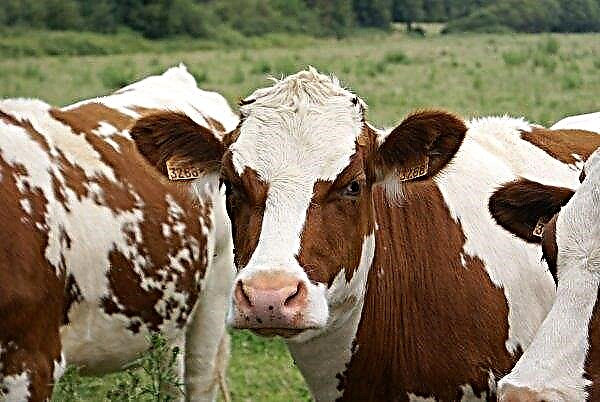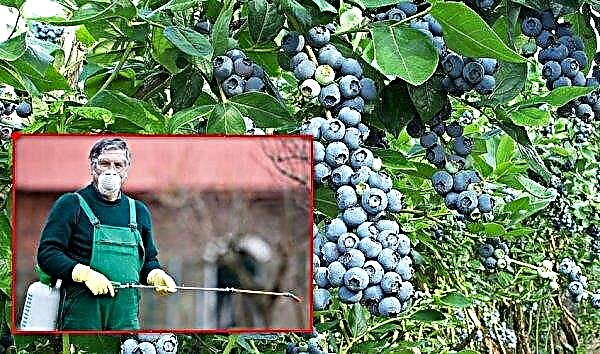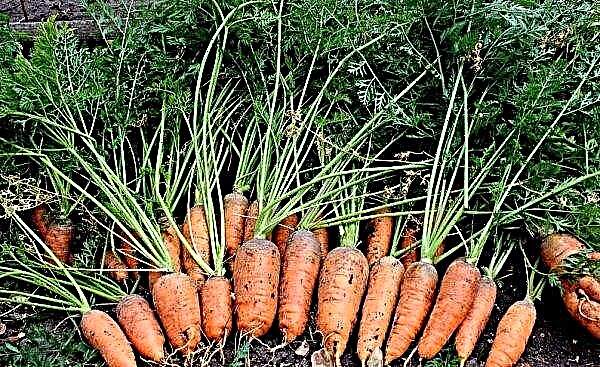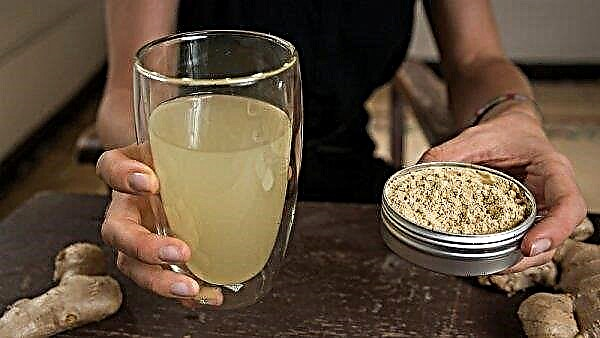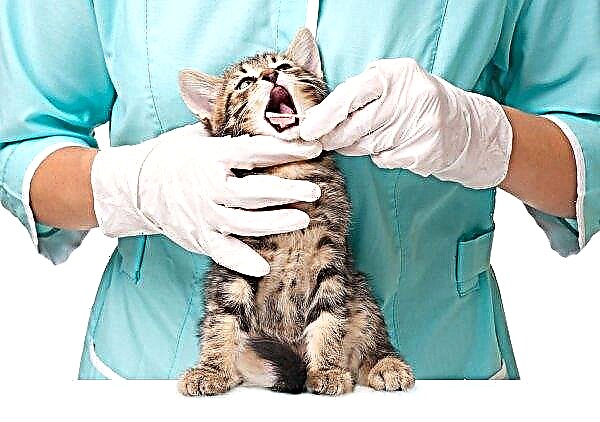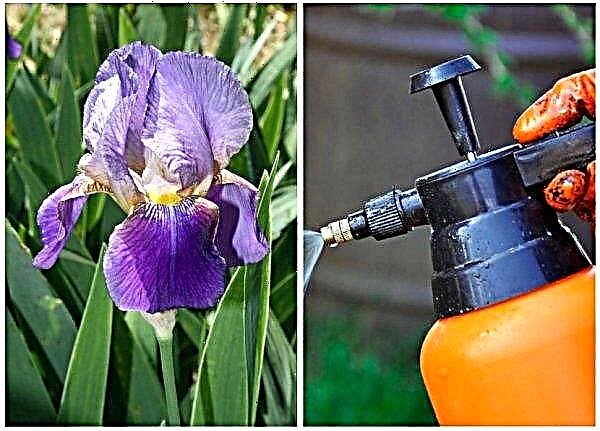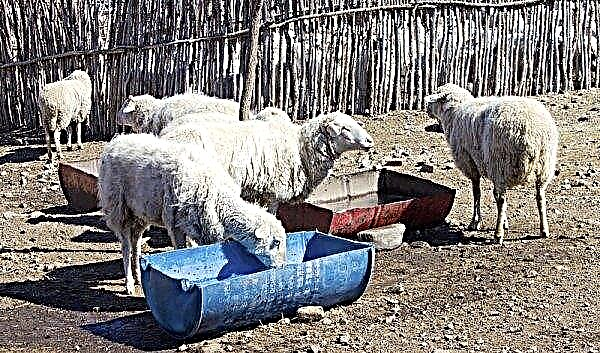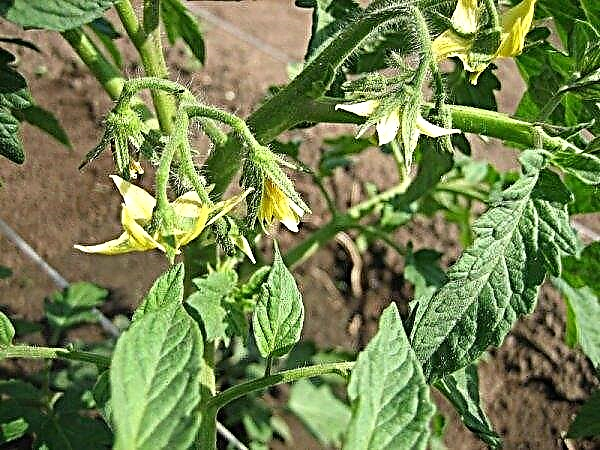From time immemorial, royal jelly has enjoyed special respect among the people; they have been treated with a large number of different ailments. That is why many beekeepers, in addition to honey, are trying to get this product. About methods for obtaining and storing royal jelly today's article.
Does royal jelly have an expiration date
Honey or royal jelly, also known as royal jelly, has a limited shelf life. A living product is considered fresh for 1-2 hours, after which its miraculous properties are destroyed.
Did you know? A scientist from Canada, Gordan Townsend, in the 60th year of the last century proved experimentally that the acid contained in royal jelly (10-hydroxy-2-decenoic acid) is able to suppress cancer cells.
- Humanity has invented several ways to extend this period, for example:
- canning;
- dehydration;
- adsorption.
How to collect and store royal jelly at home
Forcing bees to make honey jelly is not so easy, so beekeepers have to go for a trick.

Family stimulation technology for milk is as follows:
- The process described below is carried out in late spring and early summer, at which time the bees actively create families.
- 1 day old larvae of bees are moved from the hive. So that they do not die outside the house, they are created suitable conditions: the temperature of the content is + 25 ... + 30 ° C, high humidity - 90–95%. Such conditions will not allow the thin protective shell of future insects to dry out, which will lead to their death.
- After preparing the place of keeping, the bee offspring must be carefully removed. On the stand, the cells are slanted.
- Using a miniature spatula, from wood or other improvised material, the larvae are removed and placed in wax bowls with a diameter of up to 9 mm, which are filled with honey or milk.
- Before identification in a suitable family, the larva must undergo a molting process, i.e., change the outer shell to a denser one.
- Then the bowls with “foundlings” are mounted on the frame in the family without the uterus, trying to repeat the natural arrangement and the distance between the containers. In total, such grafting bowls can be up to 50 pcs., Depending on the size of the frames.
- During the so-called "milking" period, the family is fed sugar syrup.
Video: collecting royal jelly
After three days in a protective outfit, the beekeeper extracts the necessary framework. Then, at a temperature of + 27 ... + 30 ° C, royal jelly is removed using small blades of glass or aluminum, having previously removed the larvae. The container into which bee milk is collected is preferably treated with melted wax for disinfection.
Important! It is necessary to ensure that the bee bread is always present in the mother liquor, and nest workers constantly collect pollen.
In mother liquors
Mother cells in honeycombs are individual cells designed to feed a queen bee if the old queen is dead or does not cope with its functions. For honey jelly, these cells are a natural package that, outside its usual conditions (hive), loses its properties. You can store the product in the mother liquor in normal mode (without putting it in the cold) for 2 hours.
Video: getting royal jelly from the mother liquors
Milk with honey
Honey is a natural preservative for the product, which also complements the healing effect of royal jelly. A mixture of jelly and honey is prepared in a proportion of 1: 100. The color of the finished mixture is creamy cream, while maintaining the density of honey. Such a composition must be stored at a temperature of -10 ° C, the period will be 12 months.
Important! It is better to take the mixing tool not from metal, but from porcelain, ceramic or glass, otherwise the properties of the product may deteriorate.
Dissolution in alcohol
Another preservative is alcohol. The honey product is dissolved in alcohol in a proportion of 1:10, stored in this form for up to 14 months. The advantage of the method is the finished medicine, which is also quickly absorbed into the blood (due to alcohol). The disadvantage is that children, pregnant and lactating women should not take it.
Adsorption
This method is used in an industrial environment, since it is problematic to calculate the rate of adsorbing substances at home.

The resulting dry product is achieved in stages:
- Milk is mixed with a certain dose of glucose and lactose, which acts as an adsorbent.
- The mixture is thoroughly triturated in a porcelain bowl.
- In the process of grinding, the composition will become more crumbly, then it is transferred to glass bottles and hermetically sealed.
- The product is stored at a temperature of + 6 ° C for about 16 months.
Did you know? Back in 1960, the state initiated a special program in Japan, according to which schoolchildren and elderly people receive royal jelly daily for free.
Lyophilization
This is also an industrial way to increase the shelf life of jelly.
Lyophilization is carried out in several stages:
- Freezing.
- The room in a vacuum installation for dehydration.
- The resulting powder is granulated and sealed.
- Shelf life is extended up to 2 years on condition of storage at a temperature of + 15 ° C.

Storage conditions
To successfully preserve all the active ingredients of royal jelly, you need to consider all the influential factors.
Temperature
The warmer it is in the room where the raw product is stored, the shorter the period of its biological activity.
- The following was found out experimentally:
- native product (in its original form) at positive temperature maintains quality for no more than 2 hours;
- 2 months - t -1 ° С;
- 6 months - range -2 ... -5 ° С;
- 1 year - t -10 ° С;
- storage from 18 to 24 months - a range of -15 ... -20 ° C.
Humidity
Royal jelly, like all honey products, does not tolerate high humidity, so its level during storage should not be higher than 60%.
- Exceeding this level will lead to the following consequences:
- change in taste and color;
- structural change (manifestation of granularity, lumps);
- fermentation.
Tara
 The milk container should be made of natural material, a glass bottle is the best option. Glass should not be transparent, since light, in particular, sunlight, is the enemy of the product.
The milk container should be made of natural material, a glass bottle is the best option. Glass should not be transparent, since light, in particular, sunlight, is the enemy of the product.
So, the container should be made of dark glass with a suitable volume and a tight-fitting lid. Tightness can be provided with melted wax.
Beekeepers selling honey jelly often use special syringes as containers. Their convenience is that it is possible to accurately determine the required amount of substance.
Collecting and storing royal jelly requires knowledge and attention from the beekeeper. If all the requirements and conditions are met, the drug product will serve as an excellent means of preventing and strengthening the body, as well as an auxiliary tool in the treatment of ailments.

